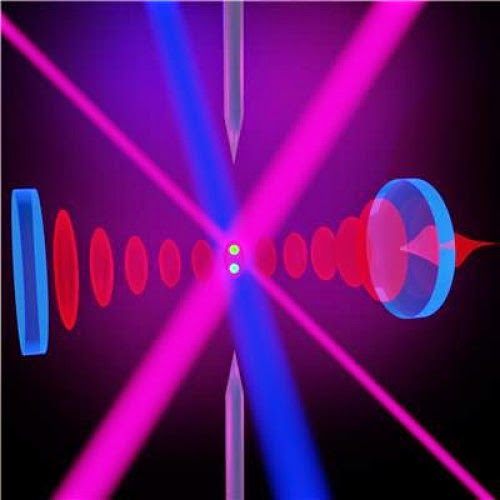Scientists create light foil that can push small objects to the side.
Light function to produce the same power that made the aircraft to fly, as shown by recent studies.
With proper design, uniform flow of light push objects are very small as well as an airplane wing aircraft body raised into the air.
Researchers have long known that the light hitting an object can push the object. That's the thinking behind the solar panel, using radiation for propulsion in space. "The ability of light to push something already known," said co-researcher Grover Swartzlander from Rochester Institute of Technology in New York, as quoted in Science News (05/12/10).
New tricks of light is more attractive than a regular boost: It creates a more complicated force called lift, evidence when a flow in one direction to move an object vertically. Air foil or airfoils generate lift; when the engine propeller rotate and move forward fuselage, wings tilted causing the plane ride.
Foil light is not meant to keep an aircraft remain in the air during a flight from one airport to another airport. But the unity of the tools that are very small it may be used to power the micro-machines, transport particles are very small or even allow methods of steering system on the solar panel.
Optical power lift is "a really neat idea," said physicist Miles Padgett from Glasgow University in Scotland, but terlau early to say how these effects may be utilized. "It may be useful, maybe not. Time will tell."
The light can have an unexpected lift is starting from a very simple question, Swartzlander said, "If we have something shaped wings and we shine a light, what happens?" Modeling experiments showed researchers that an asymmetric deflection of light will create a very stable lift. "So we thought it best to do an experiment," said Swartzlander
The researchers made a very small bars shaped like an airplane wing, on the one side and flat on the other side winding. When foils micron-sized air is immersed into the water and hit with 130 milliwatts of light from the bottom of the container, foil-foil began to move up, as expected. However, the bars are also began to move to the side, the direction perpendicular to the incoming light. Balls are very small symmetrical lift not show this effect, as the team found.
Different optical power lift from aerodynamic lift with an air foil. An aircraft fly because the air that flows more slowly under his wings using greater pressure than the air flowing faster on. But in light foil, lift created in these objects when the beam through it. Air foil shape transparent stretcher cause refracted light varies depending on where the light was passed, which causes the bending beam within their momentum that generate lift.
The corners of the foil-foil lift this light about 60 degrees, according to the team's findings. "Most objects aerodynamic airs on the corners very gradual, but it has a lift angle remarkable and very strong," said Swartzlander. "You can imagine what would happen if your plane airs at 60 degrees - your stomach will be on foot."
When the bars were lifted, it should not fall or loss of lift, as predicted. "Actually, these objects can stabilize yourself," Padgett said.
Swartzlander said that he hopes to eventually be able to test foils the light in the air as well, and try different shapes and materials with different refraction properties. In the study of the researcher uses infrared light to generate the lift, but other types of light can also, said Swartzlander. "The beautiful thing about this is that it will work as long as you have the light."
The study, published in Nature Photonics on December 5.
Hopefully this can be further investigated and developed for good.



